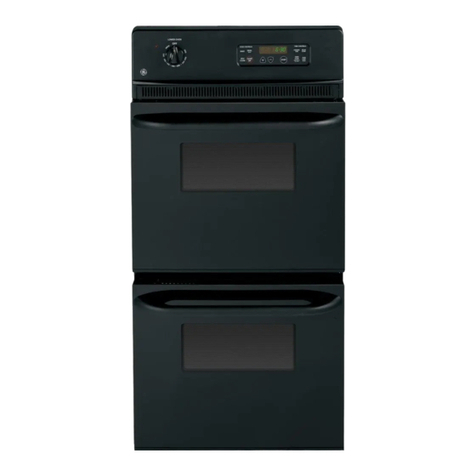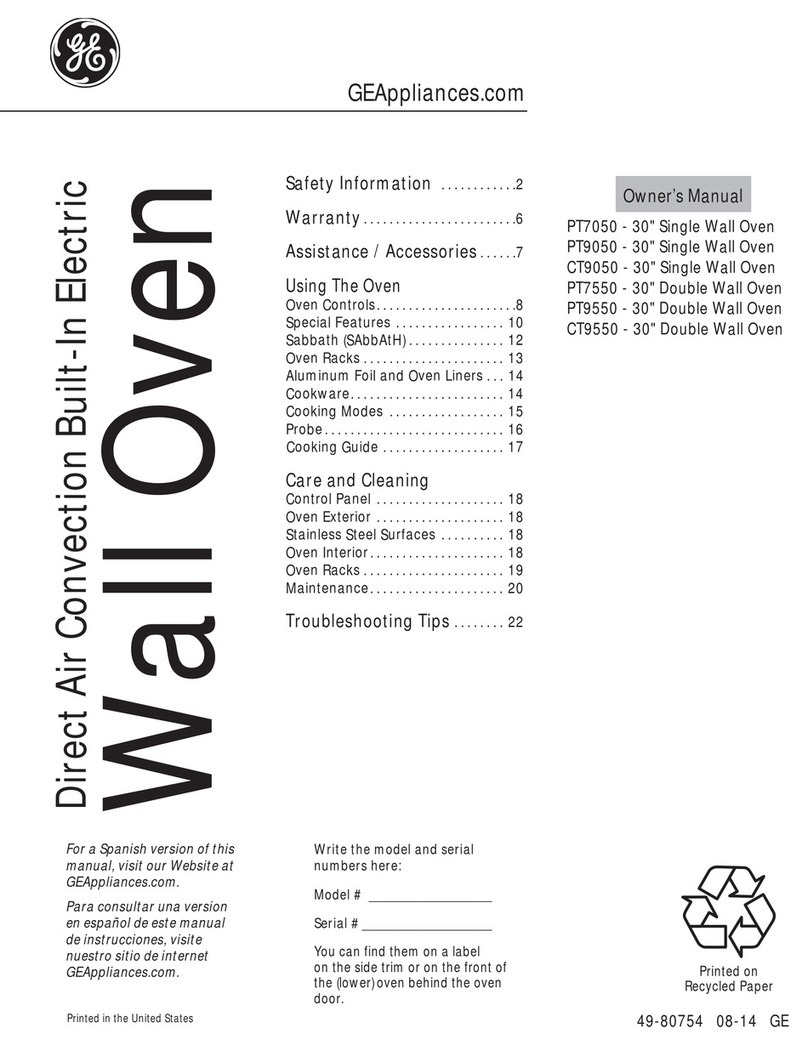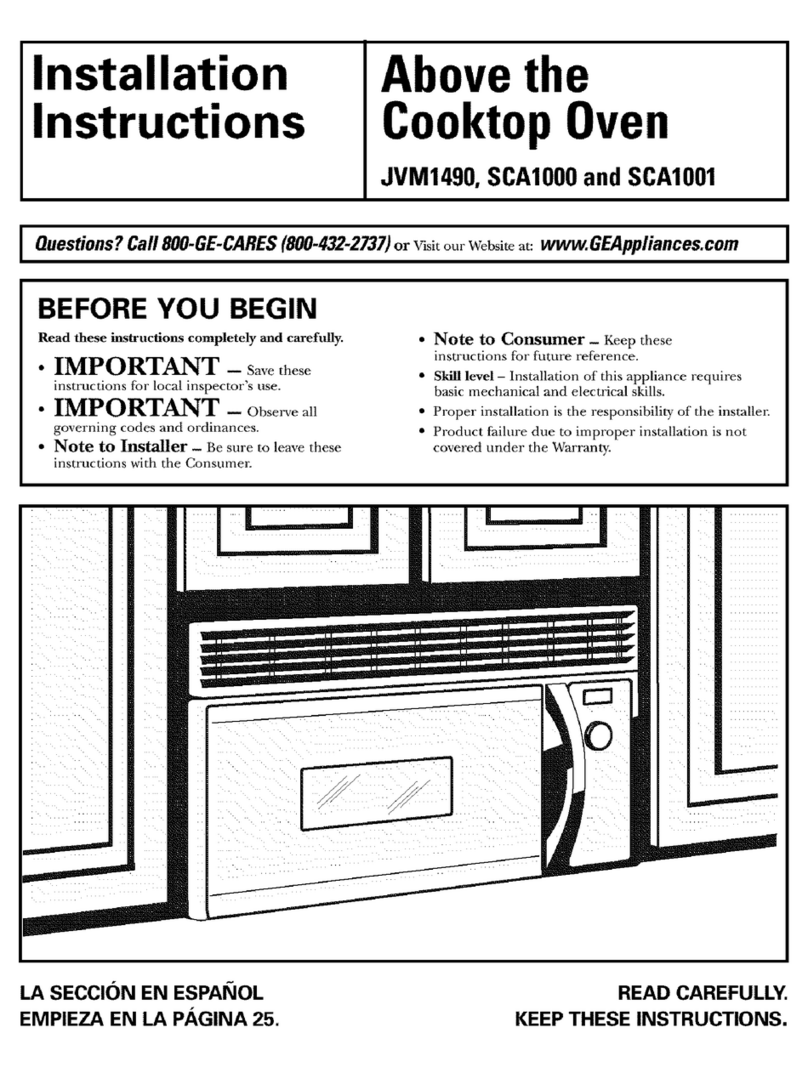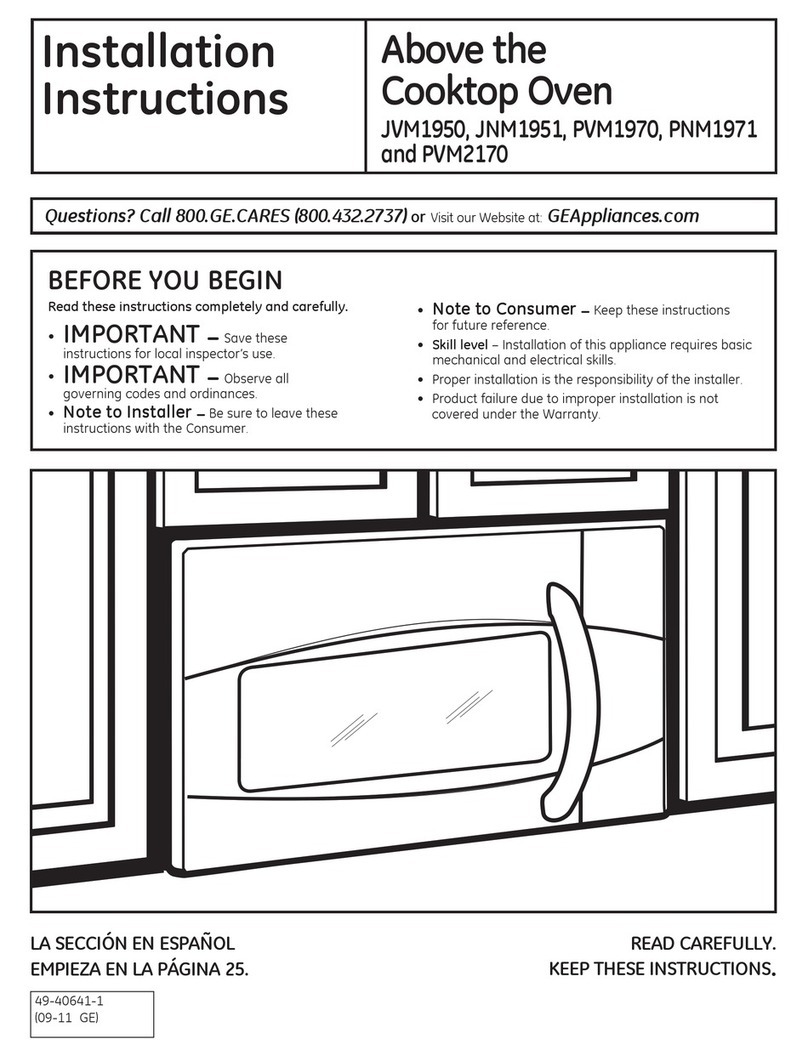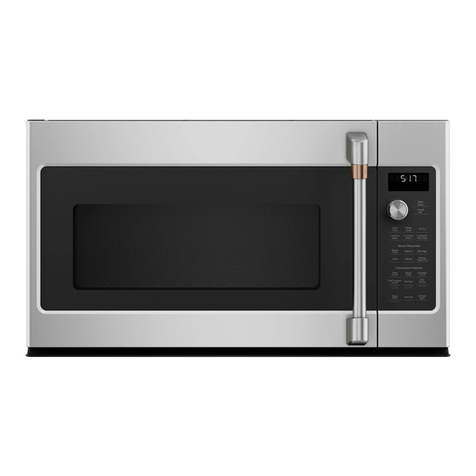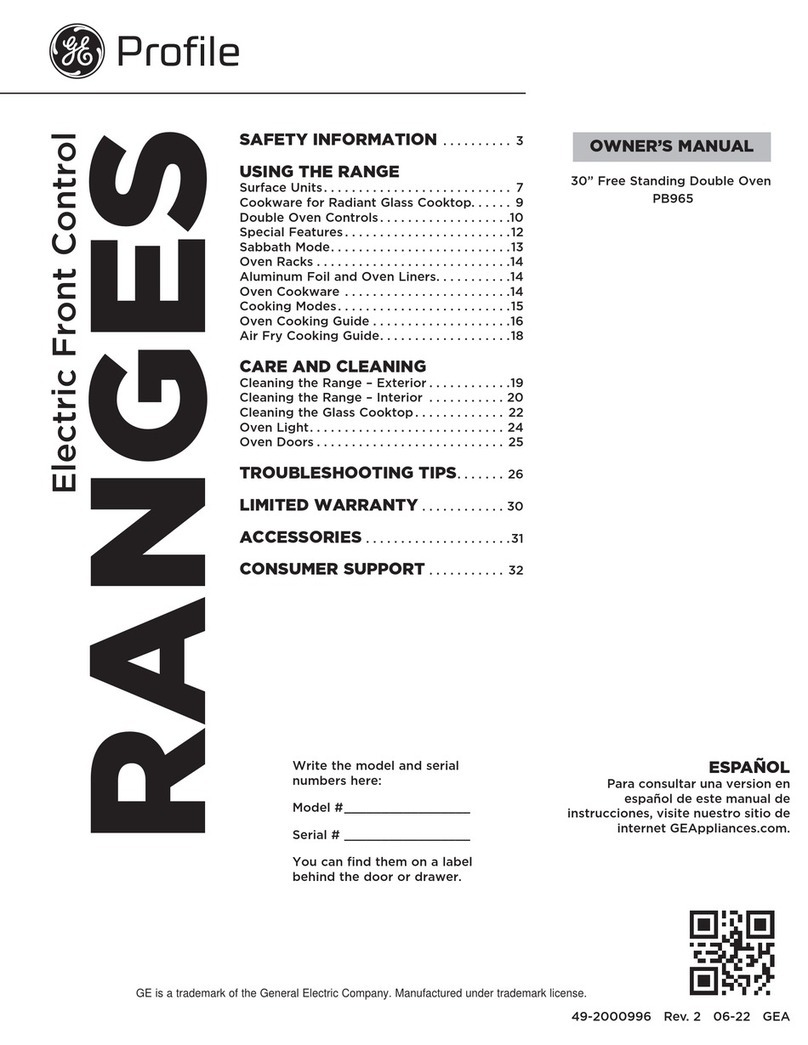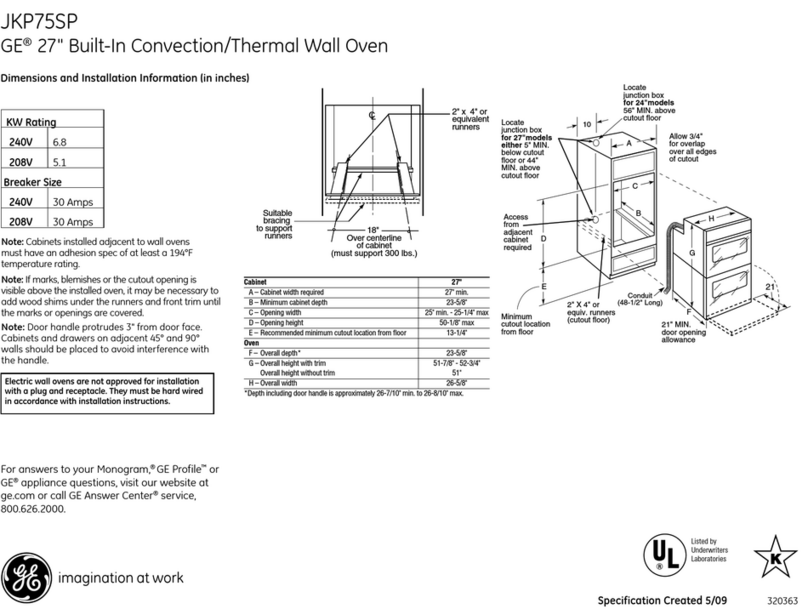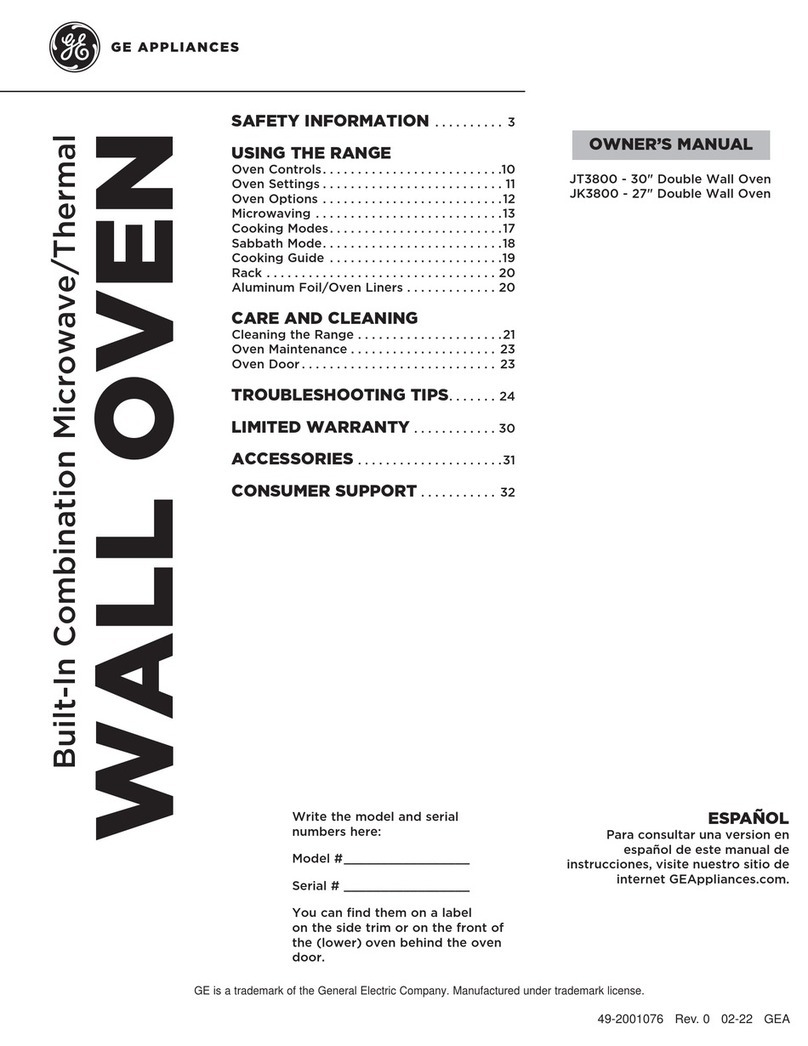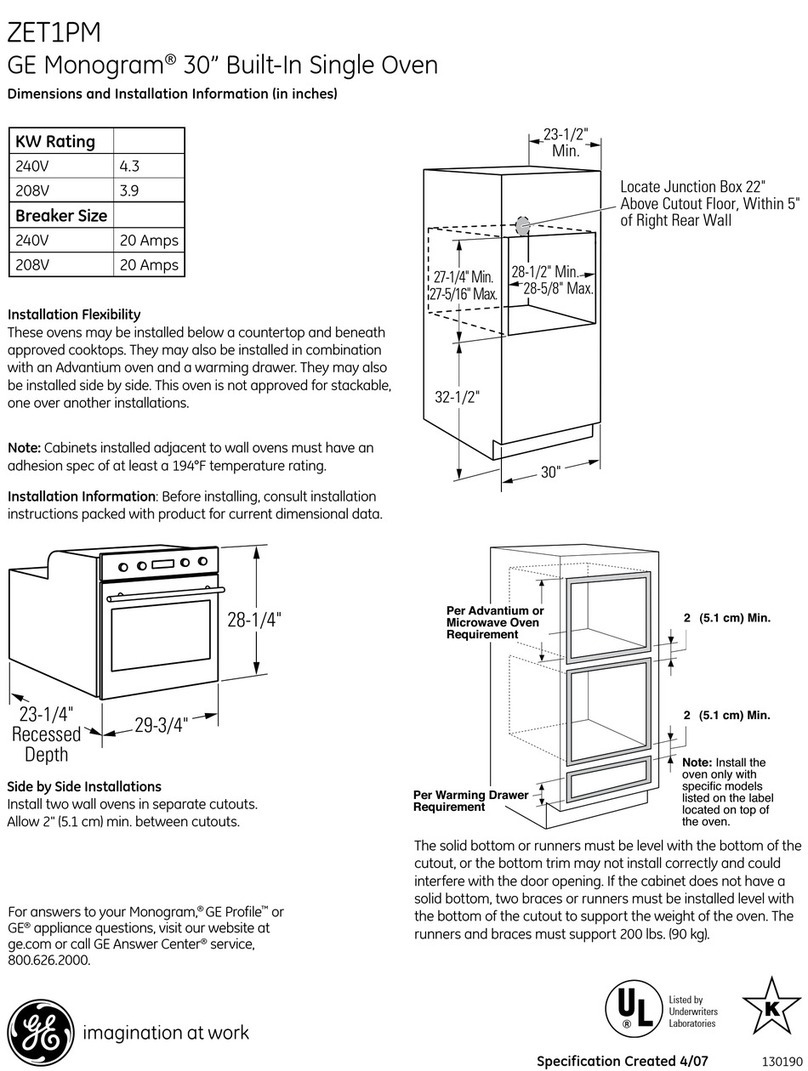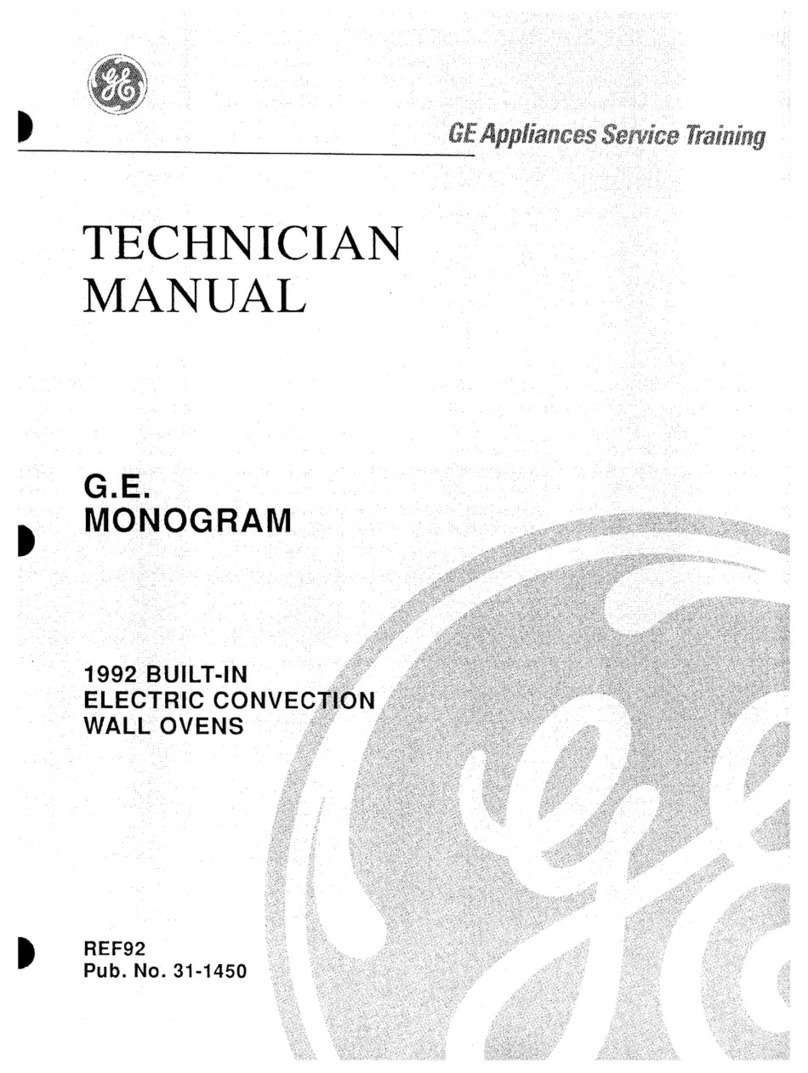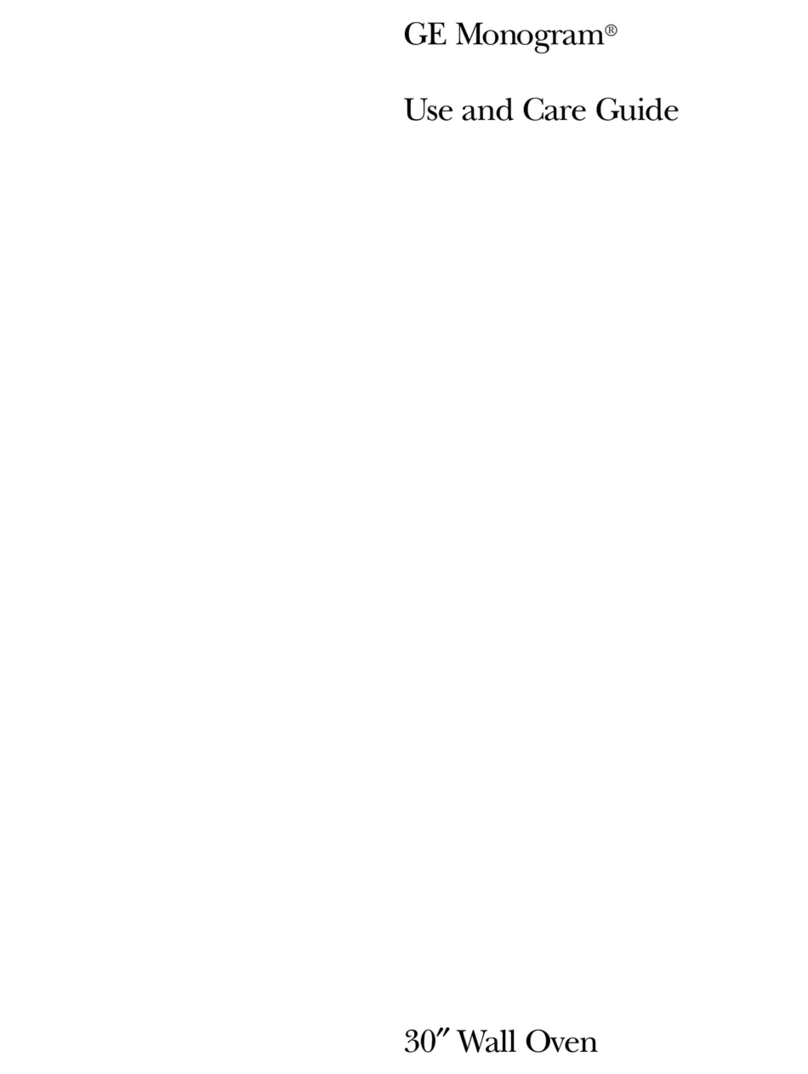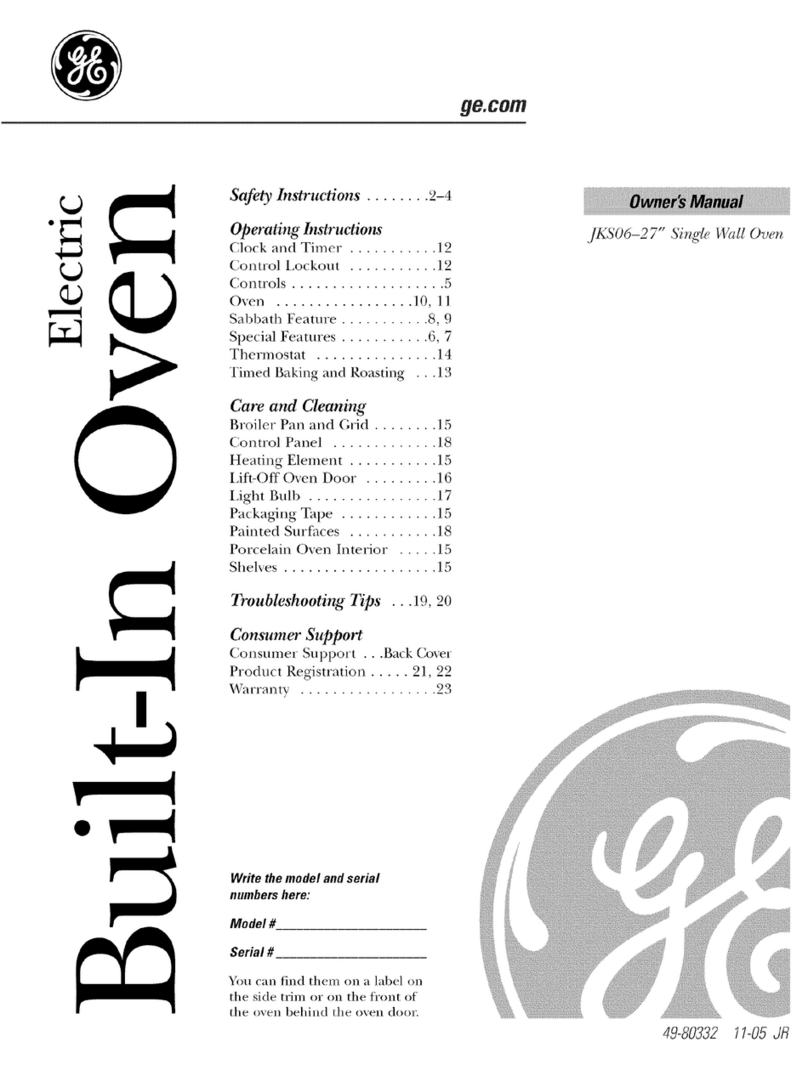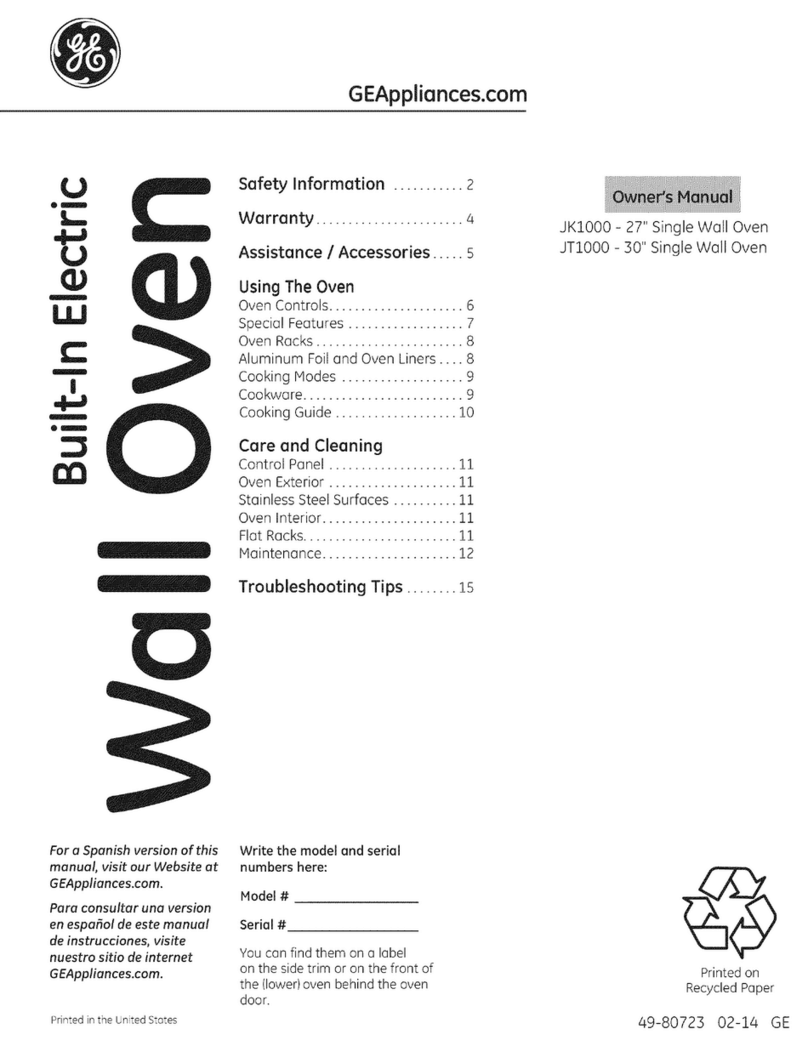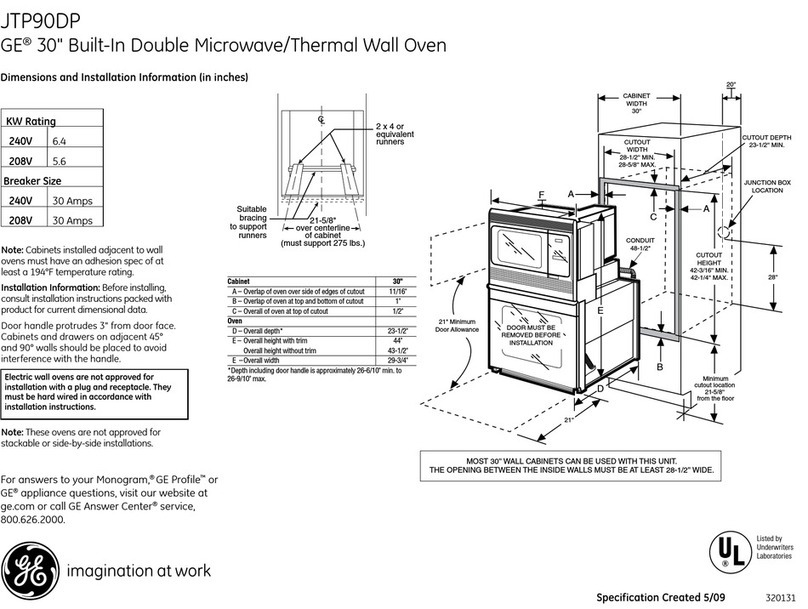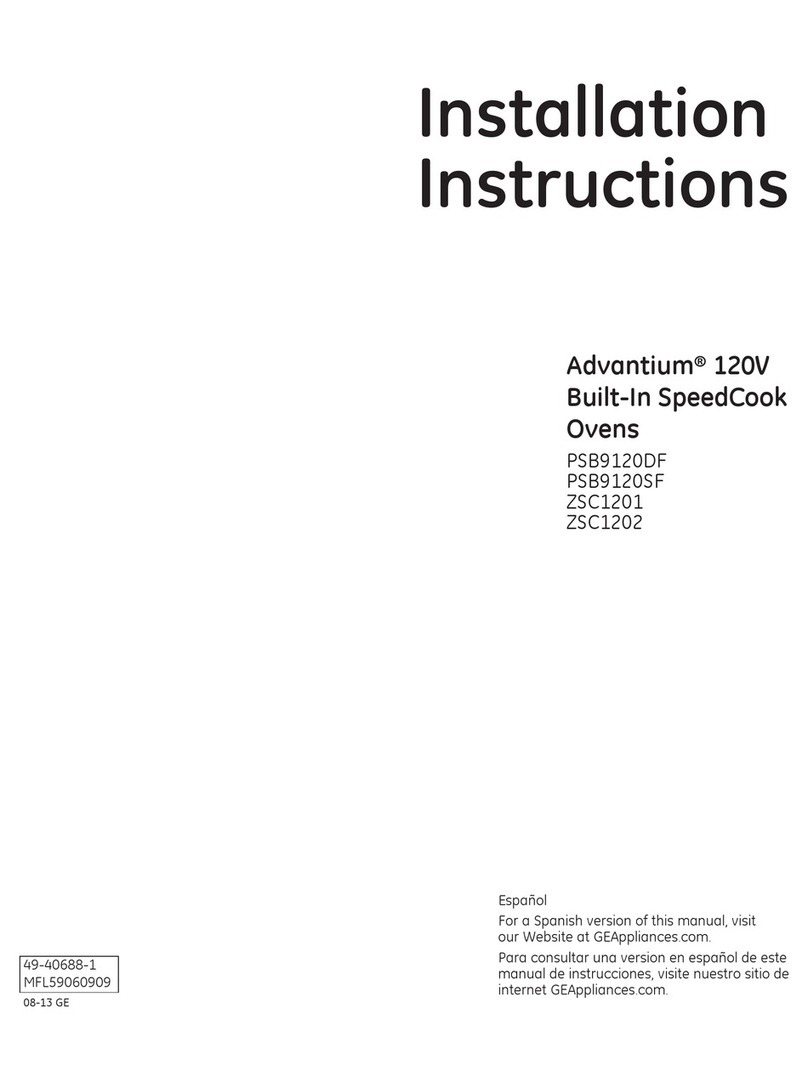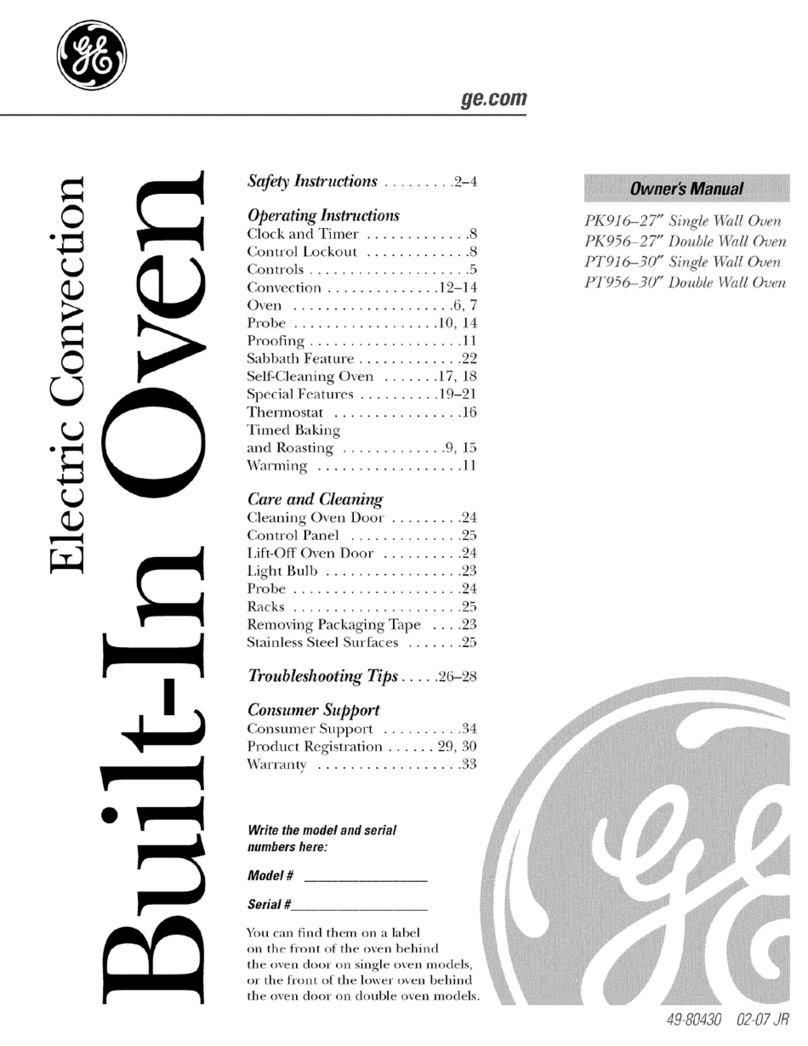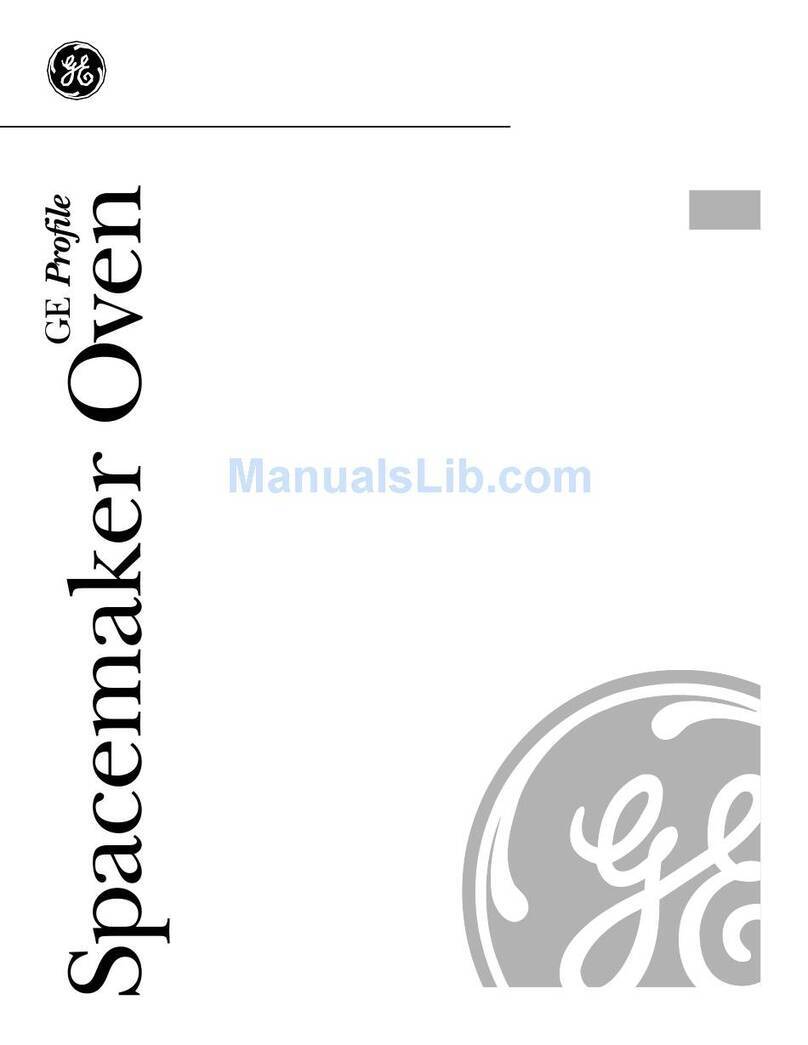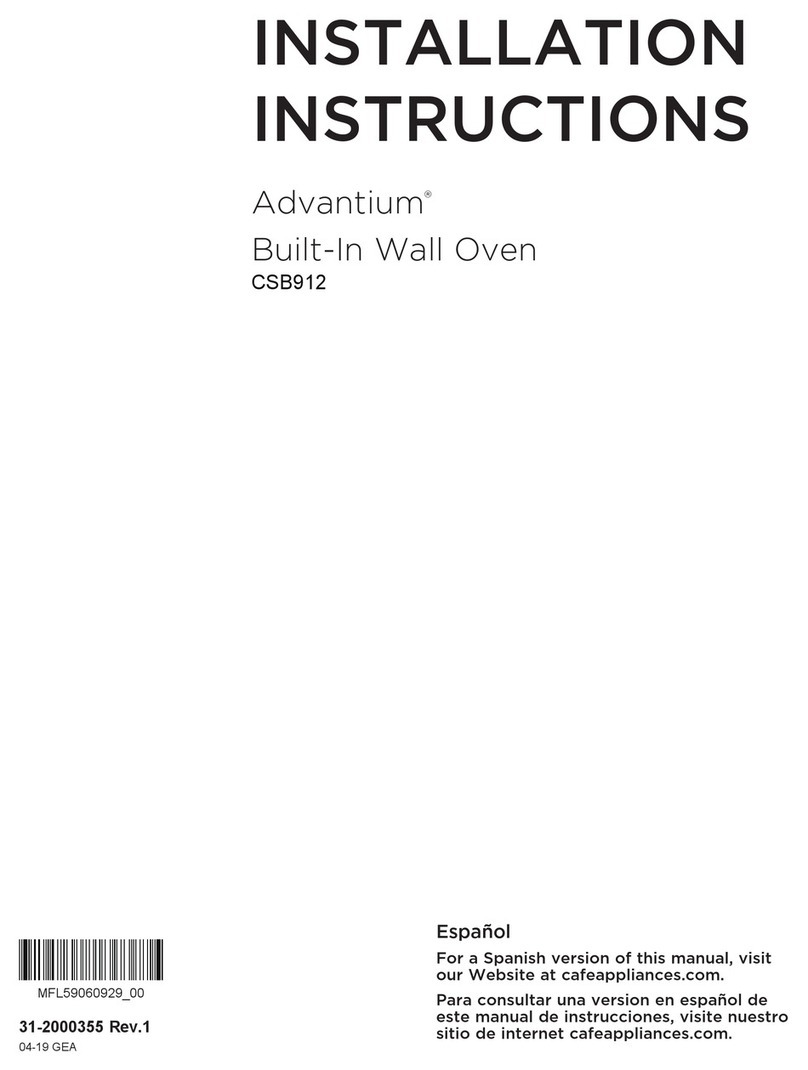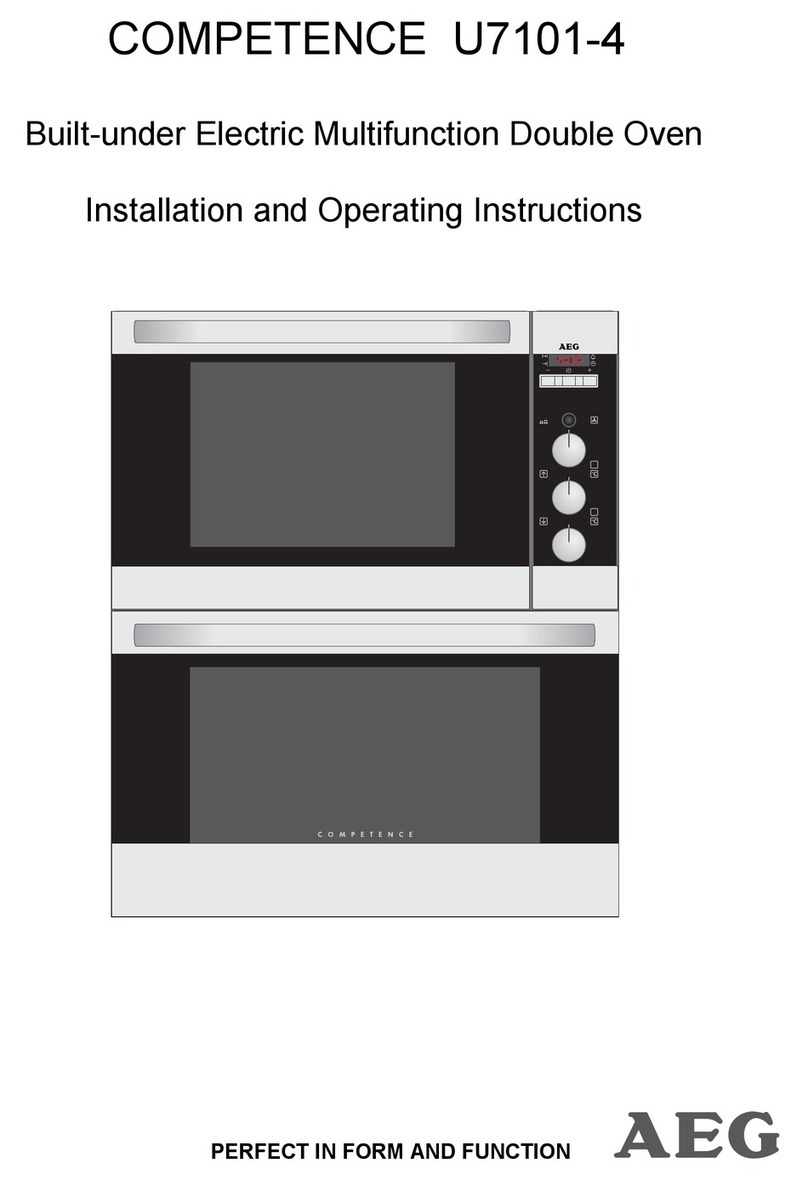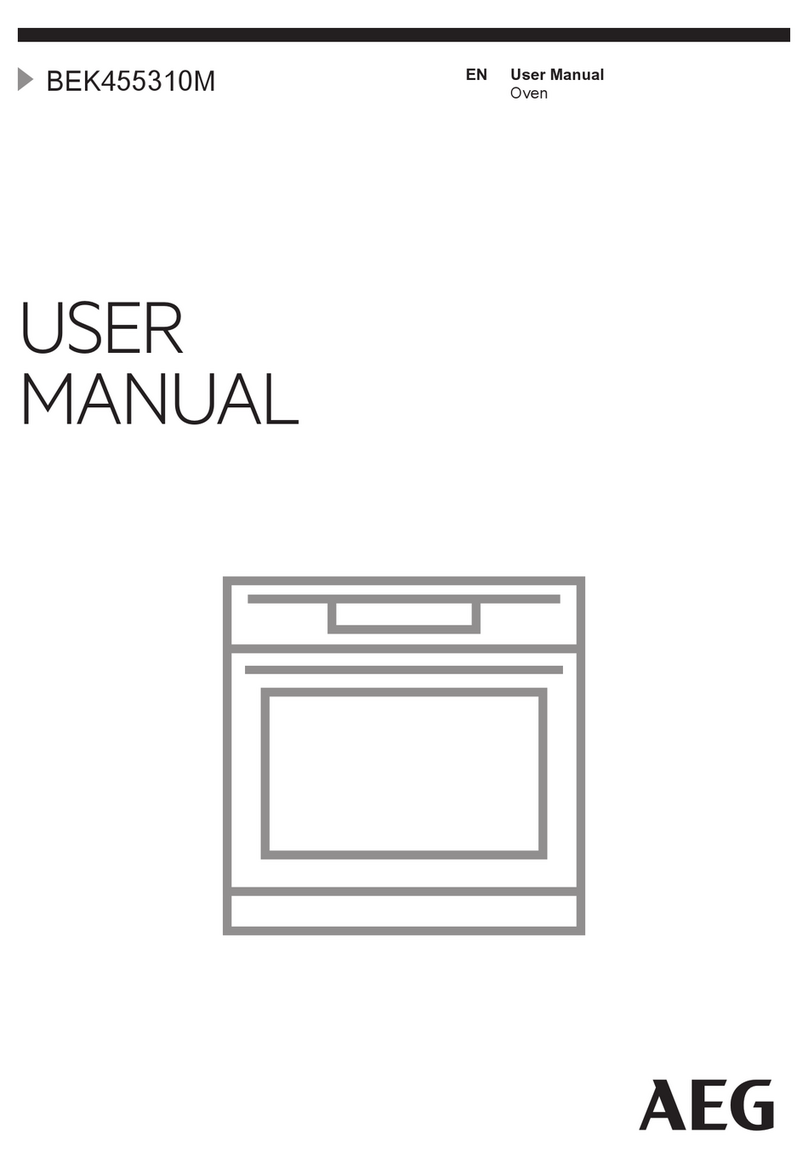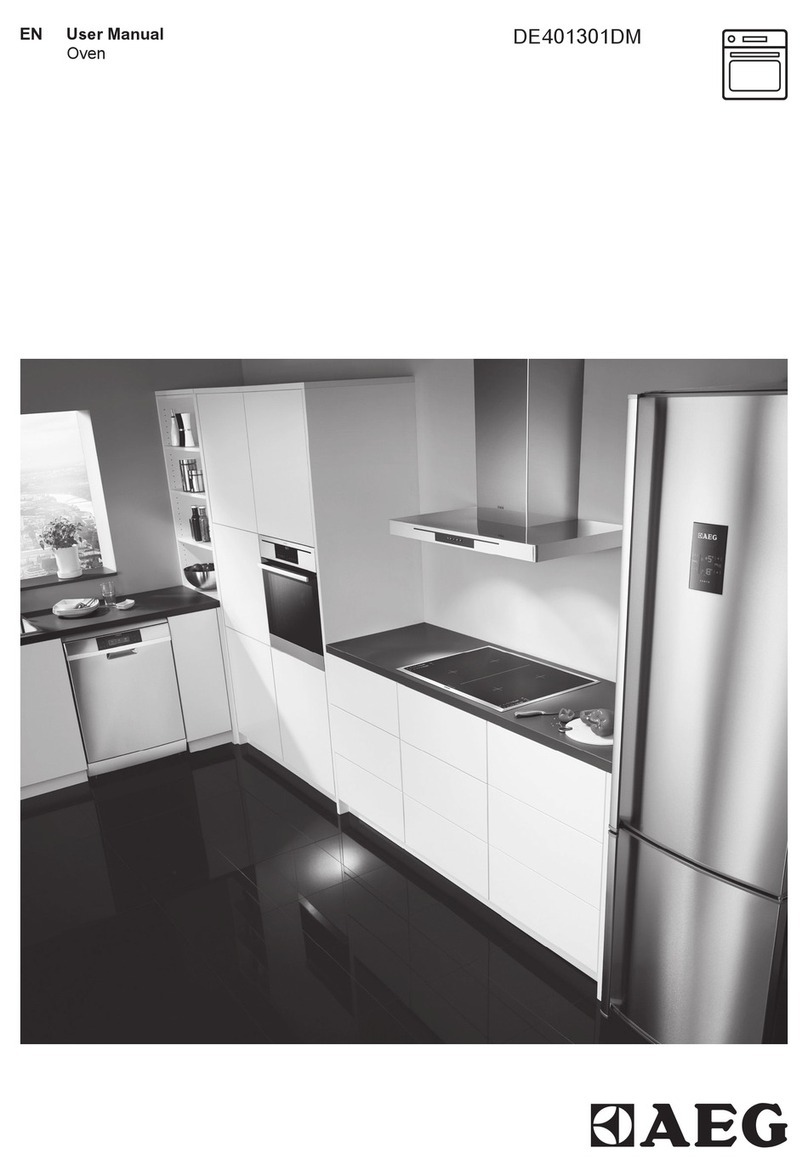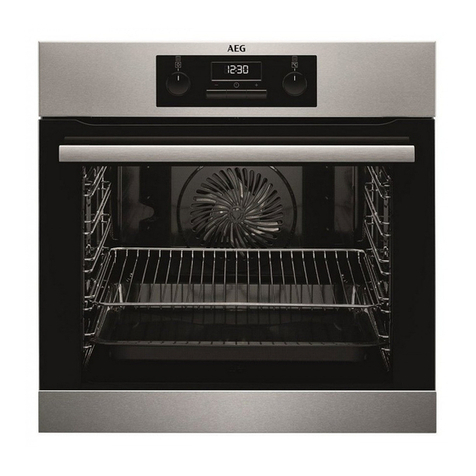Features of Your Oven Control
(Single oven control shown)
@@
Q
QQQ
@
@
Q
Q
6
1.
BAKE.
Touch this pad to select
bake function. Then tap or press
INCREASE or DECREASE pad
to display desired temperature.
2.
PROGRAM STATUS.
Words
light up in the display to indicate
what is in time display.
Programmed information can be
displayed at any time by touching
the pad of the operation you want
to see. For example, you can
display the current time of day
while the timer is counting down
by touching the CLOCK pad.
3. TIME DISPLAY. Shows the
time of day, the times set for the
timer or automatic oven operation.
4. OVEN OR PROBE
TEMPERATURE AND BROIL
DISPLAY. Shows oven temperature,
probe temperature or broil setting.
Temperature is displayed on left
side of panel for upper oven and
right side of panel for lower oven
(on double oven models).
5. FUNCTION NDICATORS.
Lights up to show whether bake,
timed bake, broil, self-clean or probe
is selected. Also lights up to show
oven door lock and oven on status.
6.
INCREASE.
Short taps to this
pad increase time or temperature
by
small
amounts. Press& hold
pad to increase time or temperature
by larger amounts.
7.
COOK TIME.
Touch this, pad
and then touch the INCREASE or
DECREASE pad to set the amount
of time you want your food to cook.
Touch BAKE and the INCREASE
or DECREASE pad to set the oven
temperature.
6
b
&
8.
TIMER ON/OFF.
The timer
does not control oven operations.
The timer can time up to 9 hours
and 55 minutes.
To set timer,
first
touch TIMER
ON/OFF pad. “O
:00~’
“HR’
>
and
“SET TIMER” will appear in
the display. Tap INCREASE or
DECREASE pad to change the time
by small amounts. Press& hold
INCREASE or DECREASE pad to
change the time by larger amounts.
Hours and minutes are entered
and displayed on the timer. Timer
signals when last minute is
reached. The timer will display
hours and minutes until the last
minute is displayed, then it will
display seconds.
Timer signals when it has counted
down to O. Then it
will
signal every
six seconds until you touch TIMER
ON/OFF pad.
9.
PROBE.
Insert the probe in
your food and the receptacle, then
touch the pad. Set your internal
food temperature by pressing
INCREASE or DECREASE pad.
10. OVEN LIGHT.
Touch to turn
oven light on or off. (On double
ovens, both oven lights come on
and go off when this pad is touched
or when either door is opened.)
11. CLEAWOFF.
Touch this pad
to cancel all oven operations except
clock and timer.
12. CLEAN. Touch this pad to
select self-cleaning function. See
Self-Cleaning Instructions section.
13. CLOCK. To set clock, first
touch CLOCK pad. “SET TIME”
will appear in the display. Tap
&
&d
INCREASE or DECREASE pad
to change the time of day by small
amounts. Press & hold INCREASE
or DECREASE pad to change the
time of day by larger amounts.
14.
STOP TIME.
Use this pad
along
with COOK TIME or
CLEAN and INCREASE or
DECREASE pad to set the oven
to start automatically and stop
automatically at a time you select.
15.
DECREASE.
Short taps
to this pad decrease time or
temperature by small amounts.
Press & hold pad to decrease time
or temperature by larger amounts.
16. BROIL. Touch this pad to
select broil function. Then tap
INCREASE pad to broil at HI
(525°F.).
Tap DECREASE pad to
broil at LO
(450°F.).
Child
Lockout Feature
Your built-in oven has a provision
for locking the control panel to
prevent the oven from being turned
on accidentally.
To lock the control panel press &
hold the INCREASE and
DECREASE pad and the STOP
TIME pad at the same time for 2
seconds. The word “OFF” will
appear and then disappear in the
display and the control panel will
be locked. During lockout, the
word “OFF” will appear
momentarily each time a cooking
function pad is touched.
To unlock the control panel, repeat
the above procedure. The word
“OFF” will appear in the display
then disappear after two seconds.

